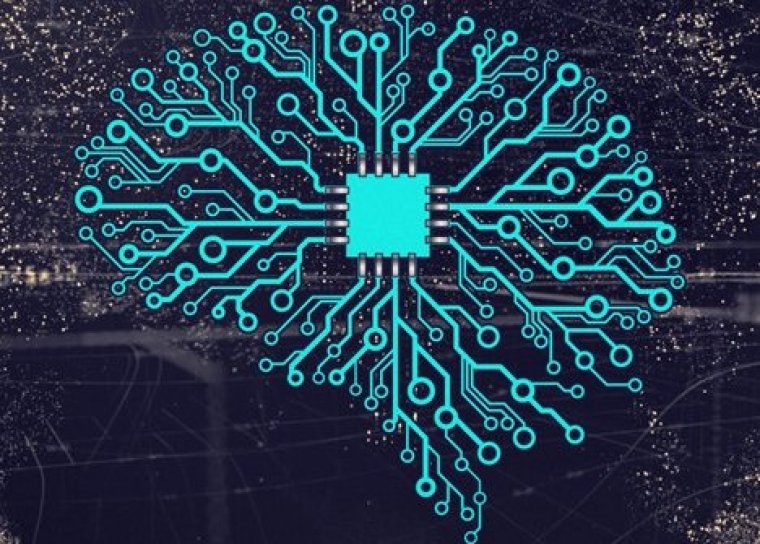| News / Science News |
Scientists create artificial neural networks that detect symmetry and patterns
A research team at Lehigh University developed and effectively taught an artificial neural network to sense symmetry and structural similarities in materials and to create similarity projections.

A rendering of an artificial neural network with a computer chip in the center. Photo: mikemacmarketing (original); Liam Huang (cropped)
The team developed an artificial neural network and used machine learning to train the neural network to spot symmetry and detect patterns and trends.
In the first effort of its kind, the researchers used this innovation to search a database of more than 25,000 images and successfully classified similar materials.
The network could transform materials research by analyzing enormous amounts of information and data from experiments to detect and decode patterns in multidimensional data.
"If you train a neural network, the result is a vector, or a set of numbers that is a compact descriptor of the features,” said Joshua Agar, a co-author and machine learning scientist at Lehigh University.
“These features help classify things so that some similarity is learned. What's produced is still rather large in space, though, because you might have 512 or more different features. So, then you want to compress it into a space that a human can comprehend such as 2D or 3D -- or maybe 4D."
The artificial neural network could help scientists and researchers learn more about the multidimensional structure of materials and the complexities of structure-property dynamics.
Artificial neural networks could analyze images and data from failed experiments and allow materials researchers to find structural similarities, patterns and trends in research data.
With improved data management and accessibility, that could reveal undetected trends and patterns, increase experiment efficiency and accelerate research. (National Science Foundation)





